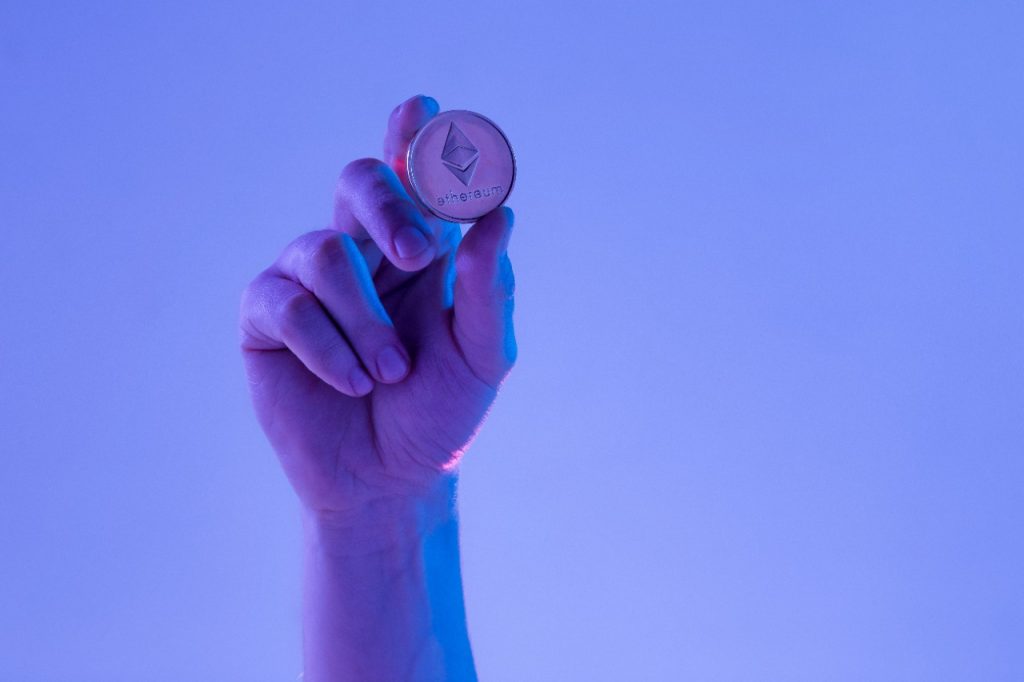What is Ethereum and How Does It Work?
Ethereum is the second largest cryptocurrency in the world after Bitcoin, and one of the busiest blockchains. This is because Ethereum is the pioneer of the smart contract technology, which is the basis for building various decentralized applications (dApps) as well as Web3. If you want to know more about what Ethereum is, read more about it in this article.
Article Summary
- 🔗 Ethereum is a decentralized computing platform, which is used to run computer programs called smart contracts.
- 👨💻 Smart contracts are basically codes that can be programmed for anything. What differentiates it from other computer programs, this code resides within the Ethereum blockchain, in a secure and immutable environment.
- 💡 Smart contracts on Ethereum allow for a more complex level of programming. Thus giving developers more freedom to experiment with their own code and create applications which are referred to as Decentralized Applications (DApps).
- 🍣 Some examples of DApps that are widely used today include crypto asset exchange applications such as Uniswap and Sushiswap, to crypto asset lending and borrowing applications such as Compound and AAVE.
- 💰 Ethereum has a native coin called Ether . ETH is a crypto asset with the second largest market cap after Bitcoin.
What is Ethereum?
Ethereum is a decentralized computing platform that executes computer programs called smart contracts. As with Bitcoin, with Ethereum anyone can transfer digital money without the help of an intermediary institution (bank or other financial institution). The technology that allows for online financial transactions without intermediary institutions is called blockchain.
However, the capabilities of the Ethereum blockchain are different from the Bitcoin blockchain. Ethereum blockchain has more complex capabilities and is more flexible than Bitcoin. This is because Ethereum allows developers to freely create applications on its blockchain.
With the smart contracts that come with Ethereum, simply put, developers can write code to manage any financial service with much more sophisticated functionality than just sending and receiving cryptocurrencies. This includes crypto asset exchanges to lending and borrowing of crypto assets.
Read also: Introduction to DApps and Smart Contract Technologies
How is Ethereum different from Bitcoin?
Ethereum is the first of the second generation blockchain and the most prominent one to date. Ethereum and Bitcoin can perform many of the same functions, but they are actually very different, and each has its own advantages.
Bitcoin is often referred to as the first generation blockchain designed with the security of digital asset transfers in mind, in this case Bitcoin as a currency. For security reasons, the Bitcoin blockchain programming language is not flexible enough for developers to create complex applications on it. On the other hand, the Ethereum blockchain has more capabilities with its smart contract technology. Apart from the transfer of digital assets, the Ethereum blockchain allows for a more complex level of programming, giving developers more freedom to experiment with their own code and build applications known as Decentralized Applications (DApps).
All transactions and interactions with smart contracts on the Ethereum blockchain are final. As with the Bitcoin blockchain, all transactions on the Ethereum blockchain are digitally signed using cryptography and sent across the Ethereum network for verification by miners before being permanently recorded on the blockchain.
How does smart contract work on Ethereum?
Smart contracts, in essence, are computer programs written on top of the Ethereum blockchain. When a certain condition stated in the program is fulfilled, the smart contract executes the commands that have been programmed automatically, whether it is to transfer tokens between Ethereum addresses, or perform other types of transactions. Smart contracts on Ethereum blockchain can be run by users or by other smart contracts.
Basically, smart contracts are just code and can be programmed for anything. What distinguishes it from other computer programs, this code lives on the Ethereum blockchain and has an Ethereum address. When a developer creates a smart contract on the Ethereum blockchain, the smart contract will permanently reside on it. Everyone can interact with the smart contract by sending transactions to the address on the smart contract.
The most common use of the smart contract is for the creation of the ERC-20 token (the most commonly used token standard on the Ethereum blockchain). All ERC-20 tokens have a smart contract that records the balance of the token at each Ethereum address. If there is an ERC-20 token transaction between Ethereum addresses, the smart contract token will recalculate a new balance for each address.
For example, A wants to send 100 USDC (ERC-20 token pegged 1:1 to US dollars) to B’s address. To complete the transaction, A sends the instruction to USDC smart contract to transfer 100 USDC from address A to address B. The USDC smart contract will reduce the balance in address A by 100 USDC, and increase the balance in address B by 100 USDC. This smart contract calculation is executed by nodes or servers of the Ethereum blockchain network and is final.
In conclusion, smart contract is a program that can assist users in executing various kinds of transactions in a secure and immutable environment, without the need for help from intermediaries, because all transactions that have been completed on the Ethereum blockchain are final and irreversible.
How smart contracts are being used today?
The smart contract technology on Ethereum has paved the way for new innovations in financial transactions. Here are some examples of how the smart contract is currently being applied.
Stablecoins
Cryptocurrency prices are very volatile. Stablecoins built on smart contracts are the answer to this problem. Basically, the value of stablecoins are made equal to the value of non-digital assets such as the rupiah and the US dollar, to keep the price stable. On many popular stablecoins, the price is stable because it is pegged 1: 1 to a fiat currency by its issuer, and can be converted to the original fiat currency.
As explained previously, one example of a stablecoin is the RupiahToken (IDRT), a crypto asset built on the Ethereum blockchain, that has the same value as rupiah. IDRT basically digitizes rupiah by producing tokens worth the amount of rupiah that the user wants to deposit, and sending them to the user’s Ethereum wallet.
Apart from IDRT, another example of stablecoin is USD Coin , which is a crypto asset programmed to have the same value as US dollars. The presence of US Dollar or Rupiah stablecoins on blockchain makes it easy for users to move money anywhere in the world in minutes, and brings the stability they also need to the crypto world. The existence of stablecoin helps bridge traditional financial infrastructure with blockchain infrastructure in the crypto world.
Borrow and lend
The smart contract technology on the Ethereum blockchain also allows the creation of lending and borrowing applications for crypto assets. Some of the examples are AAVE and Compound, blockchain-based lending and borrowing applications in the Ethereum ecosystem. With AAVE and Compound, you can deposit crypto assets to earn interest, as well as borrow other crypto assets. To use both applications, you only need an Ethereum wallet and some funds in the form of ETH or ERC-20 tokens. With AAVE and Compound, anyone can lend and borrow digital assets without a bank or other financial institution.
Decentralized exchange (DEXs)
Decentralized exchange (DEXs) is an application that facilitates the exchange of one token for another token using smart contract technology. One of the most popular examples of DEXs built on Ethereum today is Uniswap and Sushiswap. With DEXs, you can exchange ETH with ERC-20 tokens or vice versa, and also exchange between ERC-20 tokens. Any token can be exchanged as long as it follows the ERC-20 token standard.
What is Ether (ETH)?

Now%20that%20you%20understand%20how%20Ethereum%20works,%20you%20might%20still%20be%20asking%20the%20difference%20between%20Ethereum%20and%20Ether.%20Ether%20(ETH)%20is%20Ethereum%E2%80%99s%20native%20token%20used%20to%20facilitate%20transactions%20within%20its%20blockchain%20ecosystem.%20For%20every%20transaction%20executed%20in%20the%20Ethereum%20ecosystem,%20there%20is%20a%20computation%20fee%20(gas%20fee)%20that%20must%20be%20paid%20to%20the%20miner%20who%20computes%20the%20transaction.%20The%20fee%20is%20paid%20in%20ETH.%20The%20more%20complex%20the%20computation%20required,%20the%20higher%20the%20gas%20fee%20that%20must%20be%20paid.%20For%20example,%20the%20cost%20of%20sending%20ERC-20%20is%20higher%20than%20sending%20ETH,%20because%20sending%20ERC-20%20requires%20smart%20contract%20computing%20and%20interaction,%20while%20ETH%20does%20not.
%0A%0A%0A%0AThe%20price%20of%20one%20ETH%20when%20it%20was%20first%20traded%20was%20US%242.83%20or%20around%20Rp41,035.%20ETH%20reached%20an%20all-time%20high%20of%20about%20US%244,620%20in%20November%202021.%20As%20of%20December%202022,%20however,%20the%20price%20per%20coin%20however%20has%20dropped%20to%20US%241,255,%20which%20is%20equivalent%20to%20Rp19,264,748.%20
Share
Related Article
See Assets in This Article
ETH Price (24 Hours)
Market Capitalization
-
Global Volume (24 Hours)
-
Circulating Supply
-


